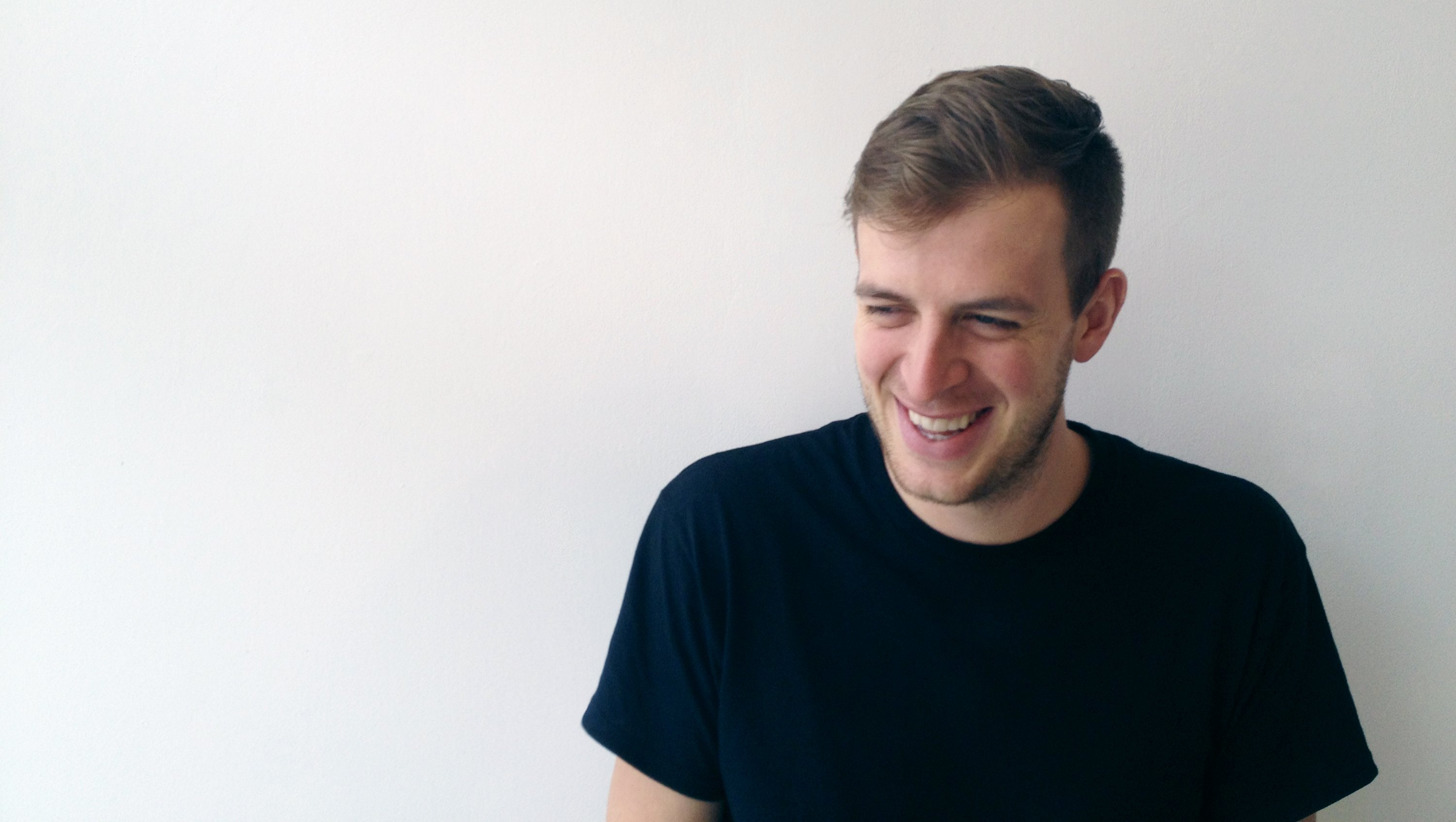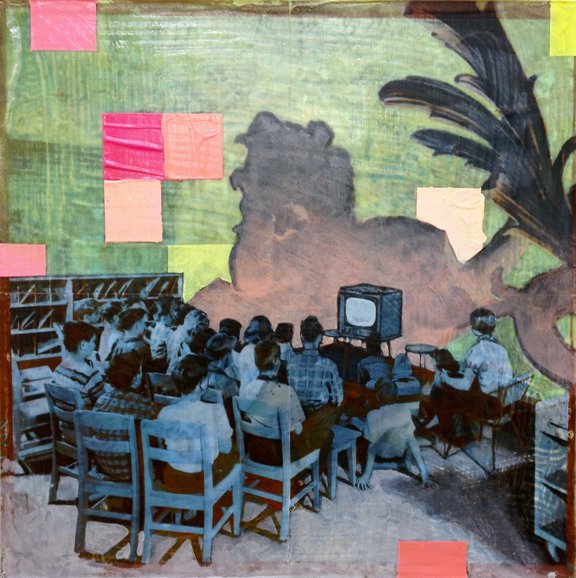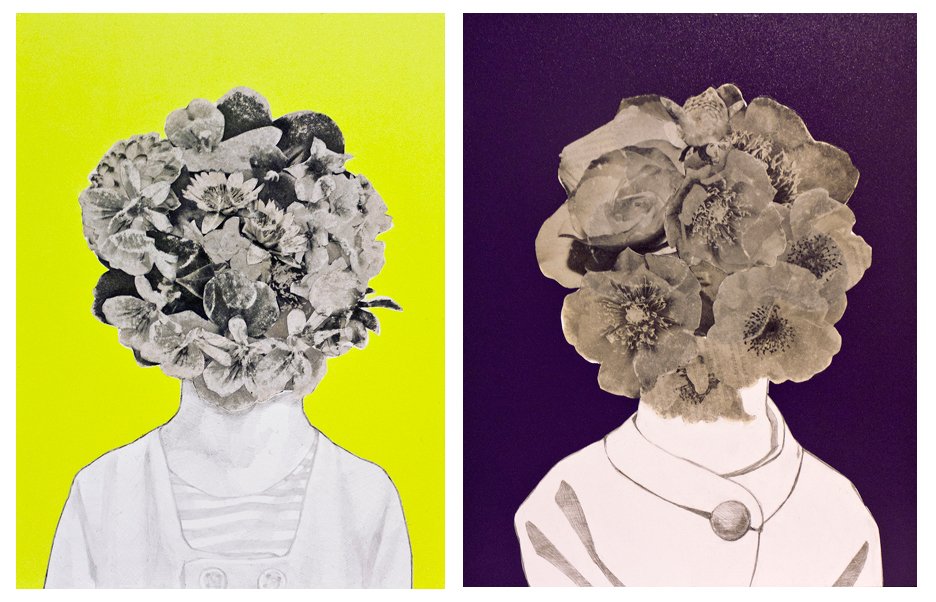ARTIST OF THE MONTH: BRANDON CORDREY
10/05/2015 | By: Toni Tronu
OCTOBER | ARTIST OF THE MONTH | BRANDON CORDREY
By: Toni Tronu

This month I am super excited to introduce Brandon Cordrey, a mixed media collage artist, living in Raleigh, North Carolina. His works’ content frequently focuses on information transfer, thinking of humans as data processing units. He earned his BFA from East Carolina University in Painting and Drawing and his work has been exhibited across the state of North Carolina and Tennessee.
I chose Brandon because many people feel berated by the amount of information they have to decipher on a day to day basis. Not only is his work hyper-relevant, but it seems to express these issues through a layered canvas with juxtaposed images of historical content vs modern colors and techniques. While viewing his work you find yourself wondering how he makes the stressful topic of data processing so beautiful.

Above: Nature vs Nurture
Toni: A lot of people study art in college and find that it is very difficult to be a professional artist. Since your graduation in 2010 you have done numerous solo exhibitions. What is the best advice you were given coming out of school? Is there anything you have learned you can share with other artists that may be struggling with exposure?
Brandon: I received my BFA from East Carolina University and while the school of art is very heavy on technical skill there were two professors who pushed my class to think about life after college. I owe much of my success to Beth Blake and Jill Eberle, two fantastic artists, teachers, and people. They challenged me on professional practices, work ethic, and balance all while demonstrating that being an adult and an artists is often about prioritizing. Both of them encouraged me to take time away from academia to explore the art world outside of the university setting and I think that was key to my personal well-being.
My advice to artists struggling with exposure is to be grateful. People die from exposure every day. That was a joke, but artists are often approached for favors or work with the promise of exposure. Artists should strive to be happy with their careers and their lives, that doesn't mean that at times you won't have to do something that is hard or exhausting, but it does mean that you should be happy with the final product. I make work that makes me happy, that helps me solve problems I can't solve otherwise and that makes me happy.
Toni: Do you have a particular routine that helps your ideas form?
Brandon: I listen to a lot of NPR and podcasts. This helps me stay up-to-date on current events and a lot of that information drives my work. I listen to a lot of this in my studio, while I am making work, which helps to keep my mind active and not let me get lost in the process alone. One other routine is that I often just spend time in my studio, not making work, but just being there. Sometimes I look through my collage materials, often old books or LIFE magazines, and other times I just look at work that is in progress and wait for whatever is going to come next to sort of hit me in the head.
 Left: Contrast and Balance | Right: Eloquent
Left: Contrast and Balance | Right: Eloquent
Toni: In your bio you state, “your works’ content frequently focuses on information transfer, thinking of humans as data processing units”, In your opinion, how does the continuous increase of data that people are exposed to affect a human’s value of art? In a world of highly accessible data does art begin to hold a higher place or does it begin to loose its value?=
Brandon: I have often thought about the increase in information as allowing us to hide a little bit, thinking that the constant flow helps to wash away mistakes or lies because they are so immediately covered up with new information. However, when you make art, when you put together an exhibition, when you put "finished" work out for the public to view it is more finite. It is hard to hide when you're the artist at the reception for a solo exhibition. I think the time and thought that goes into making art keeps it more honest and keeps artists more accountable to their thoughts. But just as soon as you have read this you could find an article saying the exact opposite, so there's that.
Toni: Tell me a little bit about your process.
Brandon: Well after the sitting and waiting and listening to podcasts I often have to start making things for a looming deadline. Most of my work starts with a base of collage so I will crinkle up, wash and then glue down a base of either pages from old books or old magazines (not a fan of new magazines) and let that dry. A lot of my process involves letting things dry. Then I will sand all of that base down to a nice smooth surface that has a lot of visual texture. From there I often work with collage and image transfer with layers of either pouring or matte medium in between. At some point I will use acrylic and graphite in most pieces then do one final coat of a medium before working in oil, often transparent, layers.
Toni: How did you get started making art and have you always worked with mixed media?
Brandon: I started drawing and painting when I was really young. I started making mixed media work when I was in college, using trash. I would collect the trash, flatten it, glue it down into a collage piece, crumple that up, flatten it again, paint on it, run it over with my car, sand it, run it through a press in the printmaking studio, draw on it, and then at some point start to move towards a "finished" piece. There is something fun about the unknown result of the materials and the processes that keeps me coming back for more.

Above: Little Rock
Toni: What are some favorable materials that you work with?
Brandon: I have a book of airplane schematics that I am a big fan of because of all the information that is contained in the image. I also love old LIFE magazines or any paper that is really dry and easily crumpled. Those types of paper really absorb the adhesive medium and glue down really well so that when you sand them they become transparent and you can see the ink from the other side of the page. My former studio mate and amazing artist Rachel Herrick reintroduced me to image transfers and pouring medium and my work has been really heavy on those two properties lately.
Toni: Is there an upcoming show you would like to share with our readers?
Brandon: I have an exhibition planned for March 2016 at Flanders Gallery in Raleigh. I am sort of hibernating in my studio and working with some new materials and processes until then, hoping to make it an interesting enough exhibition that it becomes a milestone in my artistic career.
Visit the Shop at Greenhill to stay abreast of NC trends. Contact Toni Tronu for more information on Brandon Cordrey.
